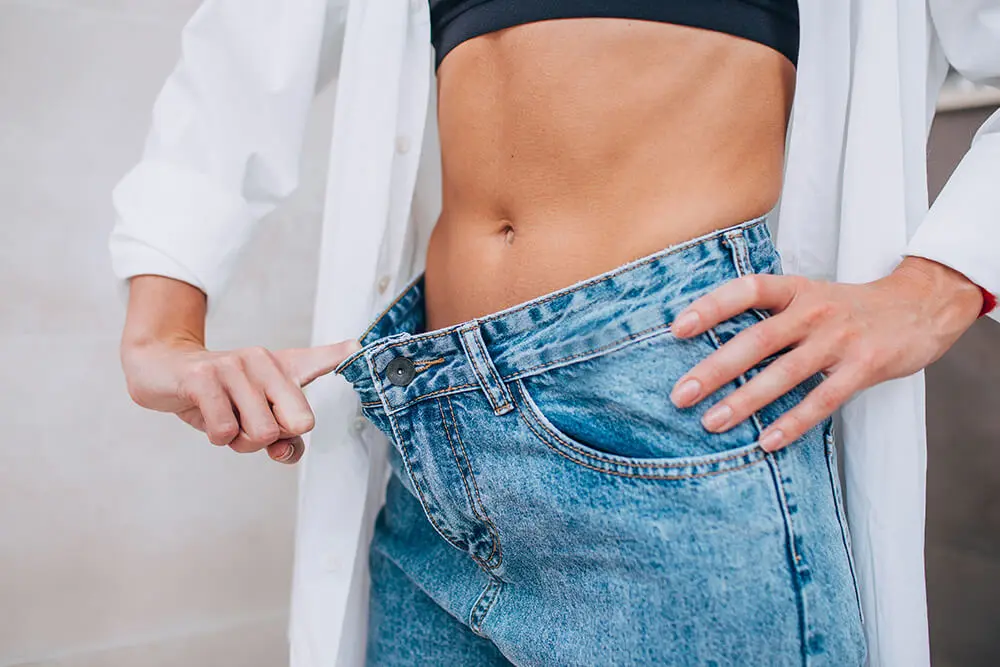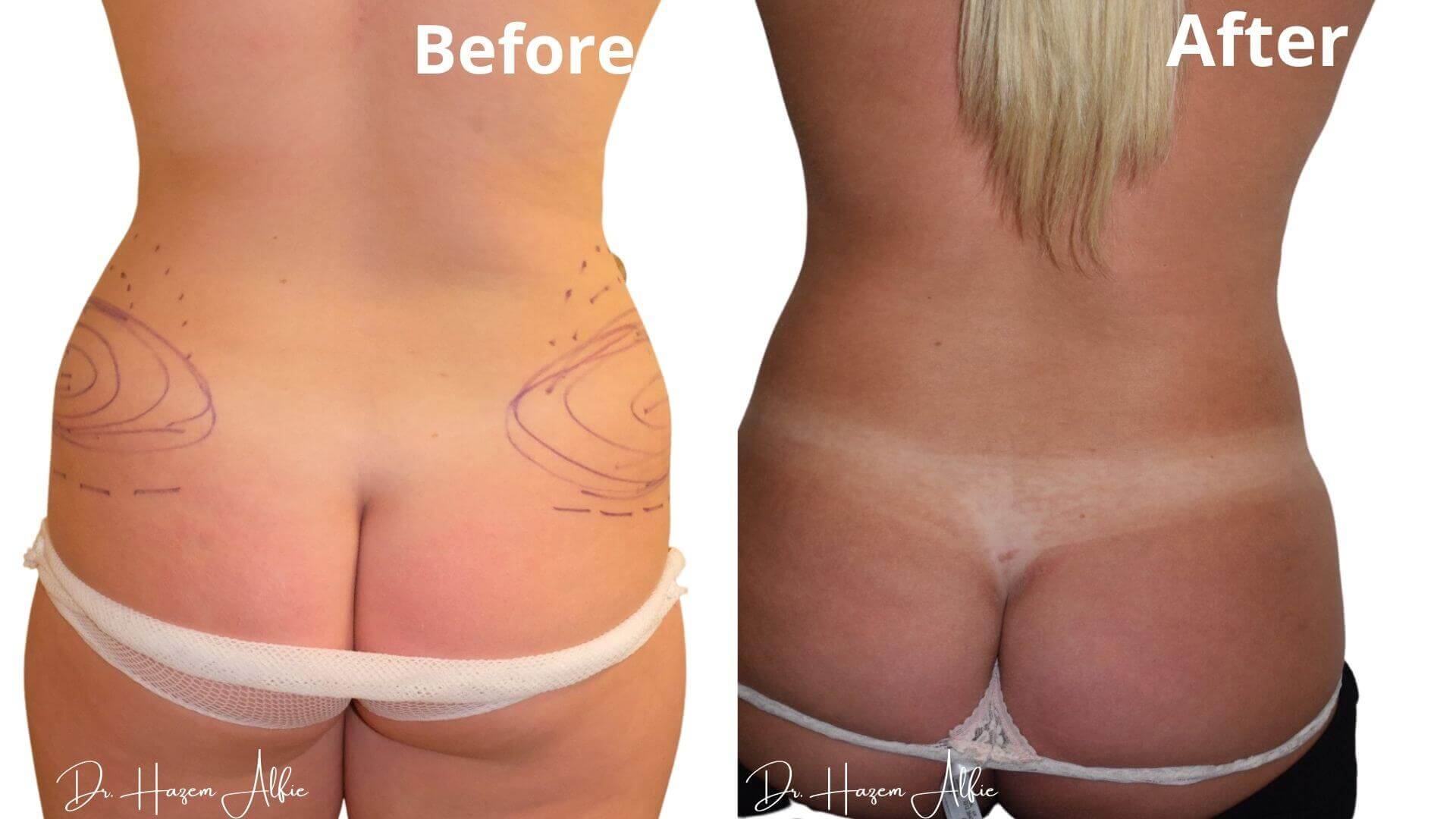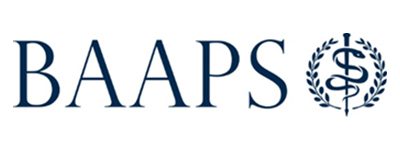Liposuction
Liposuction
2-3 hours
Time
One Day
Length
£4000
Starting price
What is liposuction?
Liposuction is one of the most common cosmetic surgery procedures in the world and the UK. It has been practised for so many years. Liposuction is considered a safe, efficient, and cost-effective surgical procedure to improve the body shape and form.
Liposuction involves removal of excessive fat from certain areas in the patient’s body including, abdomen, chest, flanks, waistline, thighs, legs, arms and chin areas, and it could be performed under either general or local anaesthesia depending on the amount of fat to be removed, number of areas, patient fitness and their preference.

Do I need liposuction?
Liposuction helps improve the body shape and aesthetic harmony of patient’s body parts and hence It does not and should not aim to reduce weight. It helps though to remove all the unwanted fat from the stubborn areas when it is difficult to remove through exercises or diet.
How do you perform liposuction?
There are different techniques for liposuction depending on the indications, patient and surgeon preferences. These include manual, power assisted, laser assisted, and Vaser liposuction.
Manual liposuction
Manual liposuction is the old conventional method of liposuction where a suction pump is connected to an end of the liposuction tubes which are connected to a special cannula with sharp holes at the tip. These holes cut through the fat to allow small boluses of fat tissue to be sucked outside the body. This method is the standard ‘’old fashion’’ technique of liposuction. It is time consuming and can be traumatic to the tissues hence it is rarely used nowadays.
Power assisted liposuction
Power assisted liposuction utilises power operated devices with specially designed cannulas to generate a ‘’shake’’ movement within the fat tissues to help liquify and extract more fat tissues with minimal trauma and a better speed. It aims to minimise the time of surgery, extent of bruises and cut down the costs involved in the liposuction surgery procedures.
Laser assisted liposuction
Laser assisted liposuction utilises laser beams to breakdown the fat tissues and cells through the skin. Once broken down into small fragments and fluid-like material, patient’s body will absorb the melt fat without the need for suction. Laser assisted liposuction may have a risk of sever thermal injuries to the skin due to the high amount of energy delivered to melt down the fat tissues. However, it can be less time consuming once established in the market.
Vaser liposuction
Vaser liposuction is one of the most recent and most popular liposuction techniques. It has gained its popularity due to the ability to help with fat liquefaction and skin contraction because of the thermal energy produced through ultrasonic probes introduced through very small skin incisions. The heat generated from the ultrasound probes breaks up the fat and fibrous tissues. This is particularly useful in certain areas like breasts in gynaecomastia patients, hips, flanks and back. VASER liposuction causes less trauma, swelling and bruises to enable patient’s easier quicker recovery after their liposuction surgery.

Why do I have excessive fat in my belly after pregnancy?
Female patients tend to have excessive fat around their abdomen during pregnancy due to the natural hormonal changes associated with pregnancy. These hormones lead to excessive deposition of fat cells in certain areas of patient’s body including, breasts, abdomen, and upper thighs. This fat remains for some time after delivery. Exercises can help accelerate getting back to normal body shape. If there are any fat deposits left in stubborn areas, then liposuction can help remove them.
How to get rid of heavy thighs?
Heavy thighs happen due to either big muscle bulk or excessive fat deposits. Exercises and diet can help improve the shape of the thighs. Liposuction can also remove the excessive fat deposits through circumferential liposuction or certain areas liposuction like inner thighs, trochanteric areas, anterior and posterior thighs.
Aftercare

What should I do after liposuction?
-
Mobilise and walk to prevent blood clots.
-
Drink plenty of fluids.
-
Eat a healthy diet with high protein to help your wounds to heal.
-
Wear your garments day and night for 6 weeks then at night only for another 3 weeks.
-
Shower using natural cleaning materials and tap dry with cotton towels.
-
Leave the dressings intact if there are any. They are usually waterproof or semi waterproof.
What should I avoid after liposuction?
-
Smoking or sitting with any smokers for at least two weeks.
-
Driving for 2 weeks after surgery at least.
-
Exercising for 4 weeks at least after surgery.
-
Spending a long time in a bath or open water.
-
Exercising your chest or upper arm muscles for at least 2 months after surgery.
What is the aftercare after liposuction?
After liposuction surgery, patients are moved to recovery in their dressings and garments. These stay in place for at least few days after the surgery to avoid disturbing the wounds. Patients stay for few hours in recovery before they are sent home with some antibiotics and pain killers.
One week to 10 days after surgery, patients will have their first dressing change at the clinic. They are then seen on regular basis by the surgeon and the nurses in the following few months after their surgery. From day one after surgery, our team members will stay in touch with the patient to make sure they are following the correct post operative recovery course.
Do I have to stay in the hospital after liposuction surgery?
Not all patients stay for a night after their liposuction procedure. In fact, most of liposuction procedures are done as a day surgery cases.
The indications for overnight stay include, but not limited to, large liposuction areas, large amount of lipoaspirate (fat removed), and patient’s health status and fitness for day surgery procedures hence patient selection is a key role in safe liposuction surgery.
When can I go back to work after liposuction?
Patients can go back to normal daily activities 2 to 3 weeks after liposuction procedures unless otherwise recommended by their surgeon. Surgeons recommend light activities for the first few weeks of patients’ return to their work. Driving and commuting should be taken into accounts when planning for surgery.
How long does it take before I can see my liposuction surgery results?
Patients should be able to see the difference immediately after liposuction surgery. Few hours after the surgery, inflammation and swelling are normal sequence to take place. Patients should take their anti-inflammatory regularly to help the swelling subside in the first few days after liposuction surgery. Once the swelling subsides, patients should be able to see the results in few weeks-time. It is crucial for the patient to be aware that final outcome can take up to 9 to 12 months.
Do you use drains in liposuction?
It is very rare to use drains after liposuction surgery nowadays, however, it is not a wrong practice to have a drain after liposuction surgery.
Liposuction & tummy tucks

Can I combine liposuction with a tummy tuck?
A tummy tuck is usually combined with liposuction to the upper abdomen, flanks and waistline nowadays. In the past there were concerns about interrupting the blood flow to the skin when surgeons combined liposuction to tummy tuck surgery.
With recent advances in surgery, it is safe to combine liposuction with tummy tuck to enhance the waistline- hip ration, flatten the upper stomach and hence improve the cosmetic outcome and achieve flat stomach.






















